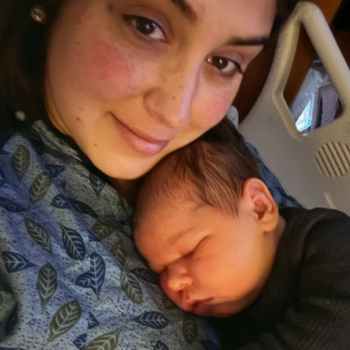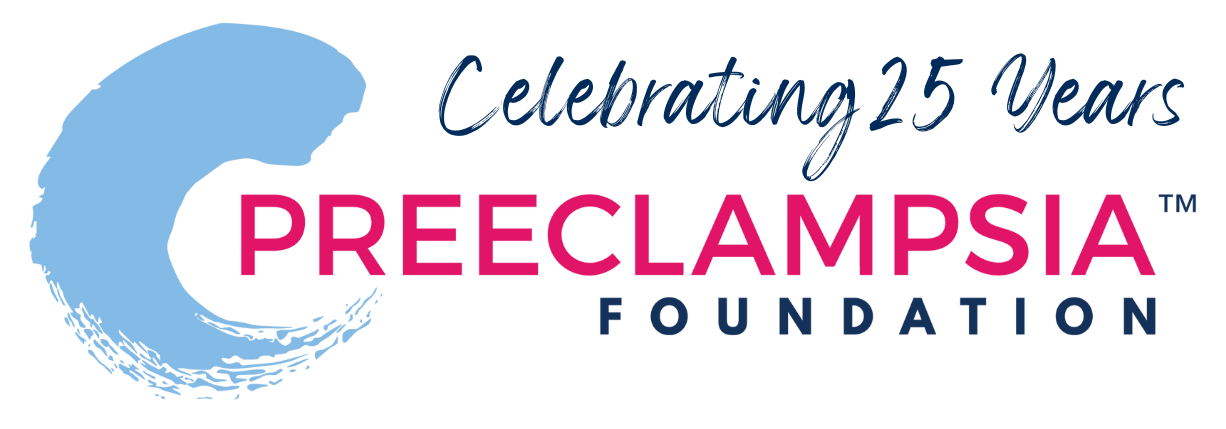1746557473.png)
A Silent Storm: Our Battle With Postpartum Preeclampsia
May 06, 2025 By Emily Emanuel
1746557473.png)
Pregnancy was supposed to be the hard part.
Aside from a scare at 34 weeks when my amniotic fluid ran low, my pregnancy had been smooth. With quick intervention—fluids and steroid shots for my baby’s lungs, just in case—we avoided an early delivery. I made it to 39 weeks and was induced. Labor was long, but uneventful. When I held my baby in my arms, I thought the hardest part was behind me.
I had no idea a silent storm was brewing inside me.
The first sign was the swelling. I had never swelled during pregnancy, yet my feet ballooned the night after delivery. The nurse reassured me it was normal and gave me pillows to prop up my legs. The next morning, I struggled to fit into my shoes, but I brushed it off—I was going home. That night, the back pain started. It came and went, growing worse each time. By the next evening, I was curled up in bed, my newborn screaming, my husband placing hot compresses to my back as I attempted to rest. I convinced myself it was pain from the epidural. When my husband called my doctor, the response was vague: “If you feel the need to bring her in, it’s up to you.”
I waited.
Hours later, I began vomiting. My husband—watching me grow weaker, his face lined with worry—called my parents to care for the baby, then rushed me to the ER.
In the chaos, he forgot to kiss me goodbye.
That moment would haunt him. What if that was our last goodbye? What if I never came home? He sat in the parking lot, gripping the steering wheel, helpless. COVID rules meant he wasn’t allowed in. All he could do was wait for a phone call that could change his world forever.
Inside, I was drowning in pain. Alone, in unbearable agony, I was given morphine while doctors ran test after test, confused. My blood pressure was skyrocketing. My heart rate had plummeted into the 40s. My liver enzymes and creatinine levels were climbing. I was transferred by ambulance to the hospital—my first-ever ambulance ride—yet I was too weak to care.
The ICU was full. Overcrowded. Overwhelmed.
When a cardiologist finally arrived, her words shattered me:
“Your heart is failing. Your kidneys are shutting down.”
I was alone. No husband to hold my hand. No baby to remind me why I had to fight. And for a moment, I didn’t want to fight. The pain—unrelenting, suffocating—wrapped around me like a vice. My back, my head, my body—every inch of me hurt. I lay curled in my hospital bed, ringing the call button for nurses who never came, whispering desperate prayers. Was this it? Was this how it ended?
The next day, they finally had a diagnosis: postpartum preeclampsia with severe features. I was rushed to labor and delivery—not because I was in labor, but because it was the only place equipped to treat me. They started magnesium sulfate—a brutal but lifesaving medication to prevent seizures. It left me feeling disoriented, as if I were trapped in a haze. My vision blurred, my body felt unbearably heavy, and every step was unsteady, like I was stumbling through a fog. My husband was finally allowed to be by my side. He held my hand as I struggled to stand, guiding me to the bathroom when I was too unsteady to walk alone.
Then, just as suddenly as he arrived, he was gone again. Once I was moved back to the overflow ICU, he was no longer allowed to stay. I was alone—again.
Slowly, the back pain faded. The vomiting stopped. My organs, though damaged, began recovering. But I had a baby… and I hadn’t seen her in over a week. Had it even happened? I felt like a mother in name only, robbed of those fragile first moments. By the time I was finally discharged, my body had survived, but my soul felt unrecognizable. The bond with my baby took months to form.
And then, a month later, the back pain returned.
Doctor after doctor, test after test—nine months later, they found it. Calculus of gallbladder with cholecystitis. One last battle. One final surgery. Then, finally, the pain was gone.
But the scars ran deeper than any incision.
My husband had watched me nearly die. He had watched helplessly as doctors fumbled for answers, as I faded before his eyes. And when I finally came home, when I finally held our baby again, he had one unwavering thought:
We can never go through this again.
For years, we wrestled with the idea of another child. The fear was paralyzing. He wasn’t afraid of the sleepless nights, the exhaustion, or the chaos of parenting two children. He was afraid of losing me. Of our daughter growing up motherless. Of another goodbye he might not get the chance to fix.
It took therapy. It took medical consultations. It took time. But in the end, we made the decision together: we wanted another baby.
This time, I had a new medical team. I was monitored closely. I had hope. And yet, I still held my breath for history to repeat itself. Would I have preeclampsia again? This time would it present itself sooner?
Besides a growth scare around 20 weeks, we had a smooth pregnancy. And then, seven days postpartum, my Fitbit was my hero.
It alerted me—my heart rate was too low. A quick check of my blood pressure confirmed my worst fear: it was dangerously high. At 11 p.m., my husband called my doctor, who gave a simple but urgent command: Get her to the ER. Now.
I was admitted quickly to the delivery unit. My doctor met me in the middle of the night to start magnesium before my body could spiral like last time.
This time, we caught it early.
This time, I survived without losing a part of myself.
And this time, my husband was able to stay by my side.
Postpartum preeclampsia doesn’t care if your pregnancy was easy. It doesn’t care if your delivery was smooth. It doesn’t care if you don’t have any risk factors. It sneaks in after the fact, when no one is watching, when you think you’re safe.
I was lucky. Twice.
Not every mother is.

My perfect daughter, Katie, gave birth to her first child just eight days before she passed away due to postpartum complications. Her deliver...
ReadMore- Thankful I Decided To Go To the Er That Night May 06, 2025
- My Journey With Preeclampsia and the Early Arrival Of My Twin Girls May 06, 2025
- My Experience With Hellp May 06, 2025
- A Mother’s War: What Preeclampsia Stole From Me May 06, 2025
- Miracle #2 May 06, 2025
- Induction at 40 weeks and 5 Days May 06, 2025
- Sharing My Story To Maybe Help Others! May 06, 2025
- The Little Rainbow Who Could May 06, 2025
- Surviving Preeclampsia: My Story Of Strength, Intuition, and A Little Miracle May 06, 2025
- When Turning In A Sample Became A 4 Month Journey May 06, 2025
